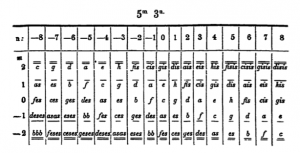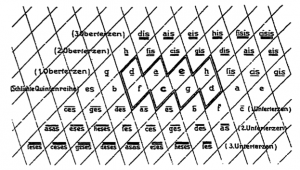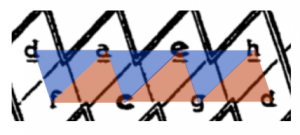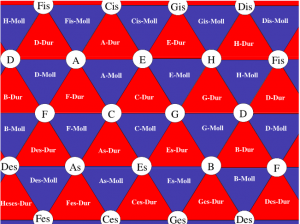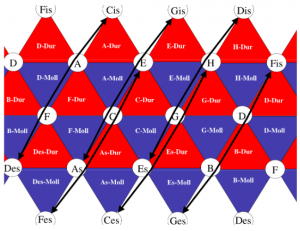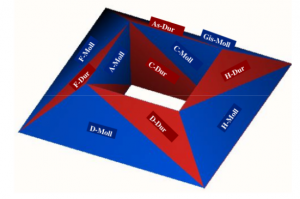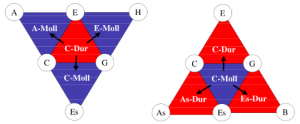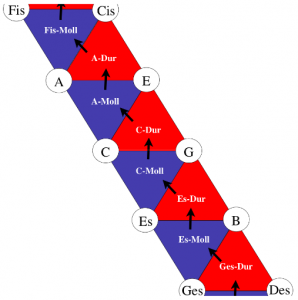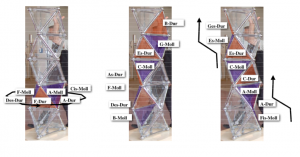Triad polyhedron
In 19th century music theory, the relationships of tones and triads were studied using two-dimensional representations. The following tone relationship table can be found in Arthur von Oettingen’s treatise “Harmony system in dual development” from 1866. Tones standing next to each other are fifth-related and tones standing on top of each other are major-terz-related. Octave relatedness is neglected in this two-dimensional representation and would be thought of as a third dimension if needed.


